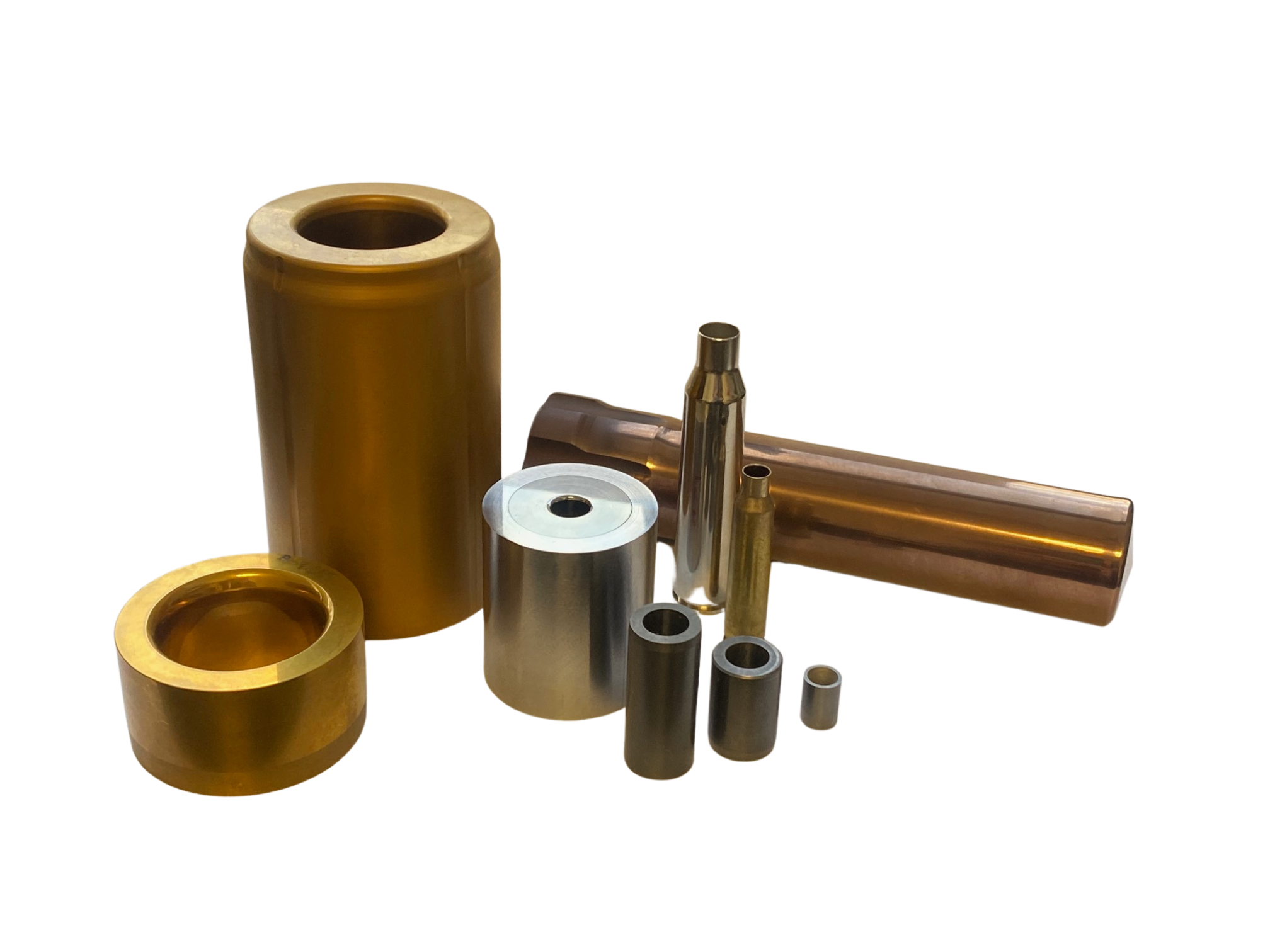In short, carbide dies have several advantages in metal stamping processes. First, carbide lasts longer than steel, providing longer lived dies and higher volume stamping runs before a die needs to be replaced. Carbide is harder than steel, more wear resistant, and can withstand extremely high compressive loads.
Tungsten carbide is a type of cemented carbide made up of Tungsten, Carbon, and a binder, typically cobalt, chromium or nickel. Changing the amount of binder used changes the properties of the Tungsten Carbide and is modified to get specific properties. When the amount of binder is increased it the result is greater impact resistance but weaker wear resistance. Vice versa, less binder means that Tungsten Carbide will be be harder giving it a better wear resistance but will be more likely to fracture. A proper understanding of the various grades of carbide can increase the chances of having a successfully designed carbide extrusion dies, drawing dies or other carbide tooling.
Carbide dies are desirable in operations requiring very high volumes. Examples of this would be applications such as cold forming and cold heading operations. These operations benefit from using carbide dies and tooling in three areas: greater wear resistance, lower maintenance, and less downtime for machines that may require worn or cracked tooling to be replaced. These benefits are due to the higher wear resistance and ability to withstand higher compressive loads of tungsten carbide when compared to steel. If you wanted to up grade in these areas from carbide you will need a very fat wallet, since the only way to go up from there is to use diamond.
Tungsten carbide is a type of cemented carbide made up of Tungsten, Carbon, and a binder, typically cobalt, chromium or nickel. Changing the amount of binder used changes the properties of the Tungsten Carbide and is modified to get specific properties. When the amount of binder is increased it the result is greater impact resistance but weaker wear resistance. Vice versa, less binder means that Tungsten Carbide will be be harder giving it a better wear resistance but will be more likely to fracture. A proper understanding of the various grades of carbide can increase the chances of having a successfully designed carbide extrusion dies, drawing dies or other carbide tooling.
Carbide dies are desirable in operations requiring very high volumes. Examples of this would be applications such as cold forming and cold heading operations. These operations benefit from using carbide dies and tooling in three areas: greater wear resistance, lower maintenance, and less downtime for machines that may require worn or cracked tooling to be replaced. These benefits are due to the higher wear resistance and ability to withstand higher compressive loads of tungsten carbide when compared to steel. If you wanted to up grade in these areas from carbide you will need a very fat wallet, since the only way to go up from there is to use diamond.










